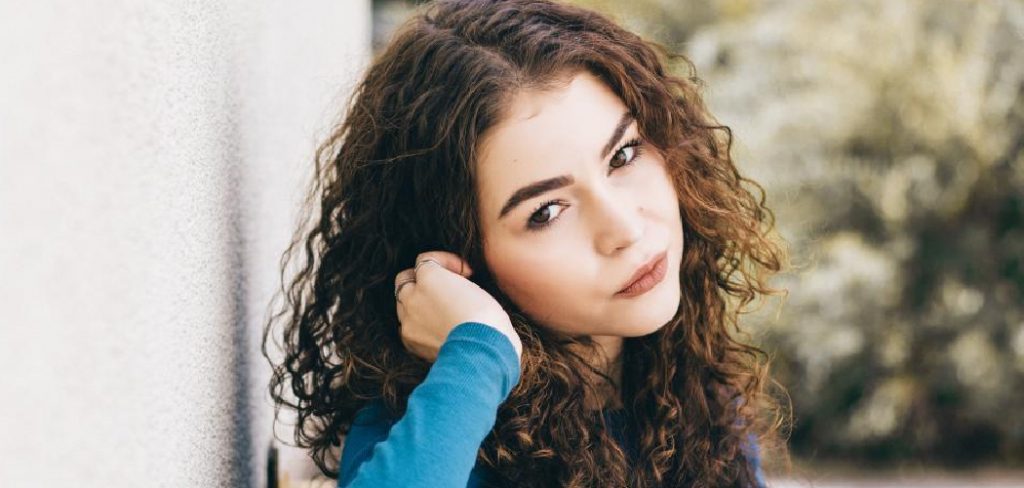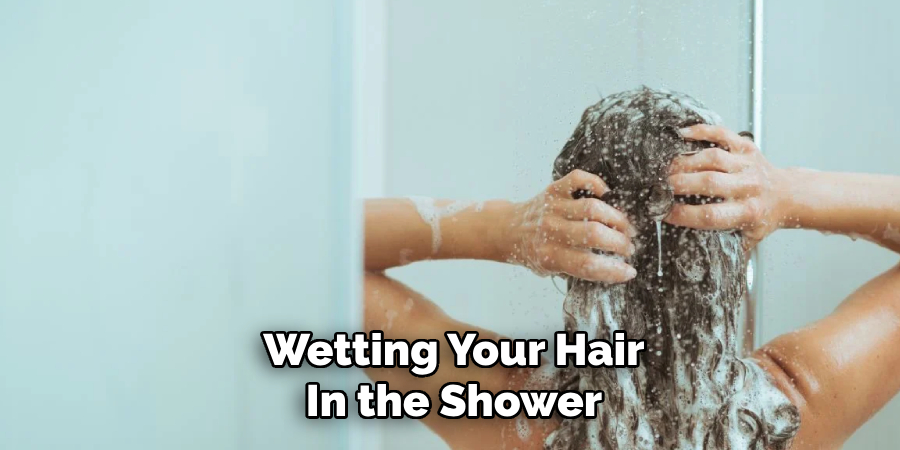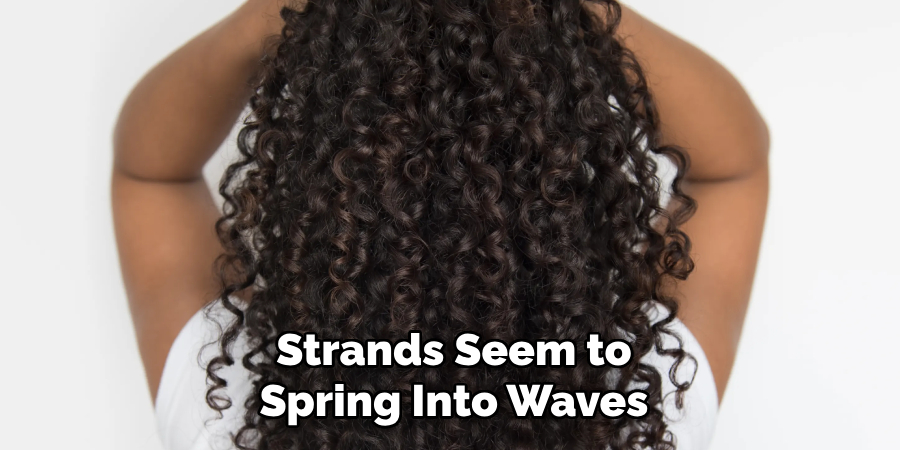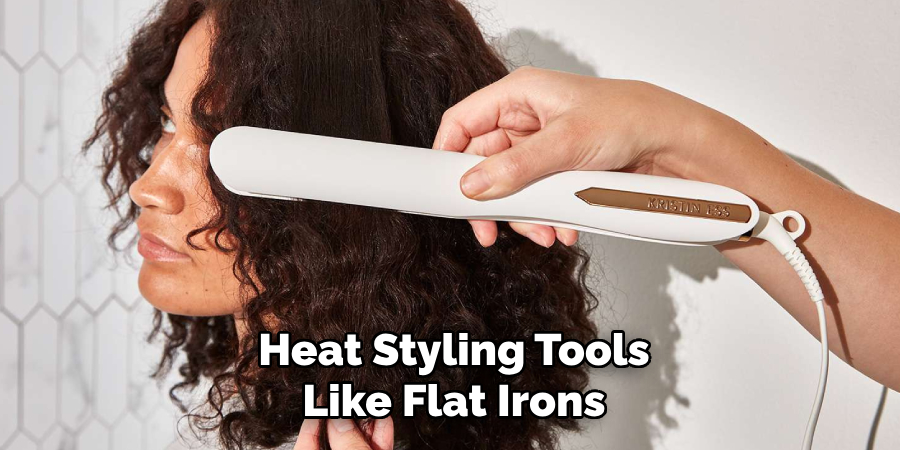Are your hair curly? Curly hair can be tricky to identify, especially if you have been straightening or styling your hair for years.
You’re not alone if you’ve ever wondered whether your hair is naturally curly or if those waves are just a fluke. Determining your hair type is the first step towards understanding how to care for and style your locks effectively.

Curly hair is characterized by its unique texture, shape, and pattern, which can range from loose waves to tight coils. In this guide on how to tell if your hair is curly, we’ll explore various indicators that can help you determine if your hair is naturally curly.
By understanding the traits and behavior of curly hair, you can embrace and enhance your natural texture, unlocking a world of styling possibilities and celebrating the beauty of your curls.
What Will You Need?
To determine if your hair is curly, you will need a few tools and products.
- A Mirror: You’ll need a good view of your hair from different angles for an accurate assessment.
- Water: Whether you have wavy or tightly coiled curls, water can help bring out your natural texture.
- Hairbrush: Use this to detangle and separate your strands to understand your curl pattern better.
- A Note-taking Device: As with any critical self-discovery journey, it’s best to take notes as you go. This will help you keep track of all the indicators that point towards curly hair.
Once you have these tools at your disposal, it’s time to start the journey to finding out if your hair is curly.
10 Easy Steps on How to Tell if Your Hair is Curly
Step 1. Examine Your Wet Hair:
Start by thoroughly wetting your hair in the shower or using a spray bottle to dampen it. Wetting your hair helps activate your natural curl pattern and makes it easier to observe. As the water saturates your strands, pay close attention to how your hair begins to form waves or coils.

Notice the shape and texture of your hair as it dries. Remember, curly hair tends to become more defined and springy when wet, while straight hair often dries with minimal texture. Take note of any natural wave patterns or curls that emerge, as this will be a key indicator of your hair’s natural texture.
Step 2. Look at Old Photos:
If you’ve been straightening or styling your hair for a long time, it can be challenging to remember what your natural hair texture looks like. Go through old photos of yourself to see if there are any pictures where your hair is in its natural state. This will show you how curly your hair was before any heat or chemical damage. Additionally, you can compare these photos to your current hair to see if there have been any changes in your natural texture.
Step 3. Observe Your Roots:
Your roots may be one of the most telling signs of natural hair texture, as they’re less likely to have been exposed to heat or chemical treatments. Look closely at the hair growing from your scalp—do you notice any signs of waves, bends, or coils? Even if the rest of your hair appears straighter, your roots can reveal your true hair type.
Remember that curly hair often grows in a unique pattern right from the root, which can help you identify your natural curliness.
Step 4. Skip the Styling Products:
For an accurate assessment of your hair’s natural texture, avoid using heavy styling products like gels, mousses, or creams for a day or two. These products can weigh your hair down or artificially enhance certain textures, making it harder to tell whether your hair is naturally curly. By keeping your hair product-free, you give it the chance to settle into its natural shape.
Step 5. Compare the Ends to the Roots:
The ends of your hair might look different than your roots, especially if you’ve been using heat tools or coloring your hair for years. Compare the texture at the ends with the texture at the roots.

Curly hair at the roots and straighter ends could indicate heat or chemical damage, and the naturally curly texture may need time to grow out and become fully visible. Remember, curly hair can also have different textures throughout the length of your locks, so pay attention to any variations you see.
Step 6. Check for Frizz:
Curly hair is prone to frizz, especially when it’s dry or damaged. If you notice a lot of flyaways and frizz in your hair, this could be another sign that your hair is naturally curly. Frizz occurs when the hair cuticle is lifted, allowing moisture to enter and disrupt the curl pattern. So if you have a lot of frizzy strands, it could mean your hair has a natural texture.
Step 7. Consider Your Hair Diameter:
The diameter, or thickness, of your hair strands, can also provide a clue about your hair type. Curly hair often has a more varied diameter, with some strands feeling thicker and others finer. To assess this, take a single strand of your hair between your fingers and notice how it feels.
If the strand feels uneven, with variations in thickness along its length, this could indicate a natural curl pattern. Additionally, curly hair tends to feel rougher or more textured than straight hair, which usually feels smoother and more uniform. Keep this in mind as you continue evaluating your hair’s natural state.
Step 8. Observe How Your Hair Behaves in Humidity:
Humidity is a notorious enemy—or ally—of curly hair, as it often causes curls to become more defined or frizzier. Spend some time outside on a humid day and notice how your hair reacts. If your strands seem to spring into waves or curls or develop extra volume and texture, this may be a sign that your hair has natural curliness.

On the other hand, straight hair tends to stay flat or limp in humid conditions. Don’t forget to note how your hair behaves in different humidity levels, as this can provide valuable information about your curl pattern.
Step 9. Twist a Section:
Take a small section of your damp hair and twist it around your finger. Hold it there for about 10 seconds, and then release it. If the section bounces back into a curl or has a coil-like shape, it indicates that your hair has a natural curl pattern. This simple test can help you visualize what your hair might look like if you embraced your curls and styled them naturally. Feel free to play around with different sections of your hair to see how they behave.
Step 10. Consult a Professional:
If you still need to figure out your hair’s natural texture, consider consulting a hairstylist who specializes in curly hair. They can help you identify your curl pattern and provide tips for caring for and styling your unique locks.
They may also suggest specific products or techniques that work best for your type of curls. Be bold, ask questions, and gather as much information as possible from the stylist. Remember, understanding your natural hair is a journey; seeking professional advice can be an excellent step towards embracing and loving your curly locks!
With these steps, you’ll be well on your way to uncovering your hair’s natural texture and better understanding its unique characteristics.
5 Things You Should Avoid
Here are five common mistakes to avoid when trying to determine if your hair is curly:
- Using the Wrong Hair Products: Products not specifically designed for curly hair can weigh down and disrupt your natural curl pattern. Be sure to use products formulated to enhance and define curls.
- Brushing or Combing Dry Hair: Brushing or combing dry curly hair can cause frizz and disrupt the curl pattern. Instead, use a wide-toothed comb or your fingers to detangle and style your hair when wet.
- Skipping Deep Conditioning: Curly hair tends to be more prone to dryness and frizz. Deep conditioning treatments are essential to maintain moisture and keep your curls healthy and defined.
- Overwashing or Underwashing: Finding the right balance when washing your curly hair is key. Overwashing can strip away natural oils, leading to dryness, while underwashing can cause product buildup and weigh down your curls.
- Using Heat Styling Tools Without Protection: Heat styling tools like flat irons and curling wands can damage curly hair if used without heat protectant products. Always use a heat protectant spray or serum to shield your hair from heat damage before using any hot tools.
By avoiding these common mistakes, you can better understand and care for your curly hair, leading to healthier and more defined curls.

Conclusion
Determining your hair’s natural texture is an exciting and empowering journey. By carefully assessing the signs mentioned in this guide, you can better understand your unique curl pattern.
Curly hair is beautiful, and embracing its natural state can lead to healthier, more defined locks. Feel free to experiment with different products, styling techniques, and professional advice to find what works best for your curls.
Hopefully, the article on how to tell if your hair is curly has been helpful and informative. Embrace your curls with confidence and love, and let your natural hair shine!
With proper care and love, you’ll have gorgeous curly hair that shines from root to tip! So go ahead and try out these steps to uncover the beauty of your natural curls! Happy styling!
About the Author
Jane Hubbard is a passionate beauty expert with a wealth of experience in makeup, hair, and overall beauty techniques. After years of working as a hairdresser specialist, she followed her entrepreneurial spirit and started her own consultancy business.
Jane has always been driven by her desire to help others feel confident in their own skin, and she does this by sharing her knowledge, experiences, and practical beauty tips. Through her consultancy, she empowers individuals to embrace their unique beauty, offering tailored guidance that boosts both self-esteem and personal style.
Professional Focus
- Specializes in makeup, hairstyling, and beauty consulting.
- Provides personalized beauty advice, tips, and techniques to help individuals feel confident in their appearance.
- Dedicated to staying up-to-date with the latest industry trends and developments.
- Passionate about creating a comfortable and empowering experience for every client.
Education History
- University of Craft and Design – Bachelor of Fine Arts (BFA) in Woodworking and Furniture Design
- Woodworking Apprenticeships – Extensive hands-on training with skilled craftsmen to refine carpentry and furniture making techniques
- Online Courses & Masterclasses – Continued education in advanced woodworking techniques, design principles, and specialized tools
Expertise:
- Makeup artistry, hairstyling, and beauty consulting.
- Personalized beauty techniques to enhance confidence and self-expression.
- Educating clients on how to maintain their beauty routines at home.
